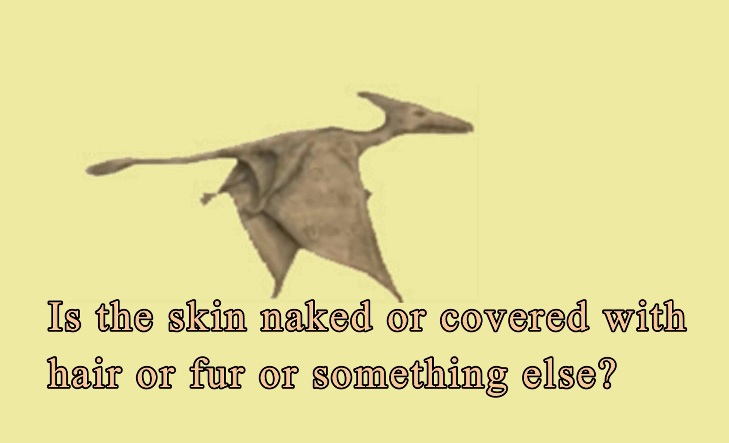By the investigative journalist and ropen expert Jonathan Whitcomb
Over the years, I’ve rarely mentioned much on this blog about the possibility that ropens in general are covered with some amount of fine hair. Only a small fraction of the total eyewitnesses have been close enough to see such a detail, even if they had a mind to take notice of hair, or lack thereof, at the time of their sightings. Let’s now look into this.
Why talk about hair on modern pterosaurs, or apparent living pterosaurs, now? I recently saw part of a video on Youtube, a highly critical attack against the possibility that such flying creatures exist. My video is a response to the idea that the ropen is not a real animal because it is reported to have no hair. Watch the video to get an introduction to my response:
A new mini-documentary about the ropen
In reality, most eyewitnesses of the ropen are too far away to see whether or not the apparent pterosaur (or ‘pterodactyl’) had any hair or similar skin covering, except that those persons say that it does not have feathers.
The critics fail to realize a number of things, being ignorant of key principles and details that make all the difference.
This video shows how difficult it is to see human hair on human arms at beach scenes, even though we know that people naturally have hair on their arms. Being unable to see hair or lack of hair on human arms at a distance is in no way evidence that humans, as a species, do not have arm hair.
Now apply that to ropens who are seen by people. Even if the eyewitnesses were looking for an appearance of hair or lack thereof, they were usually too far away to see that.
###
.
Featherless flying animal in Texas
He estimated the wingspan at 4 1/2 to 5 feet with a long tail that had a “diamond type shape” at the end [Update: See other posts on the ropen]. The creature had leathery skin rather than any hair or feathers [according to the eyewitness; keep in mind that some leather products still have some hair, and it is possible that a small amount of fine hair may have been present on the flying creature that was seen in Marion County, Texas, in 1995].
.
Terms and Conditions for using this site
You must not use this Website if you disagree with any of these Website Standard Terms and Conditions.
.
The ropen and a diamond-shaped end of tail
The great majority of persons who have contacted me give details that have some correlation with many previous reports that I have received over the years. In fact, certain details are very common, especially a lack of feathers on the flying creature and a long tail that ends in a structure that is diamond-shaped or like a spade (or triangular).
.
This video is a short introduction to this apparent modern Rhamphorhynchoid pterosaur that lives in Papua New Guinea.
.
How large is [this critic’s] “Living Pterosaurs” online page? It has tens of thousands of words. In fact, it mentions me by name 463 times, yes four hundred sixty three times (“26 Nov. 2017” version). Many web pages, on whatever subject, do not even have a total word count over 400. It brings to my mind a phrase in Hamlet: “the lady doth protest too much.”
.
Those cryptozoologists who have explored tropical islands in Papua New Guinea, in search of living pterosaurs, believe the ropen is a large long-tailed flying creature having no feathers. It’s not yet officially classified in Western science.
.




2 Replies to “Ropen Hair”
Comments are closed.